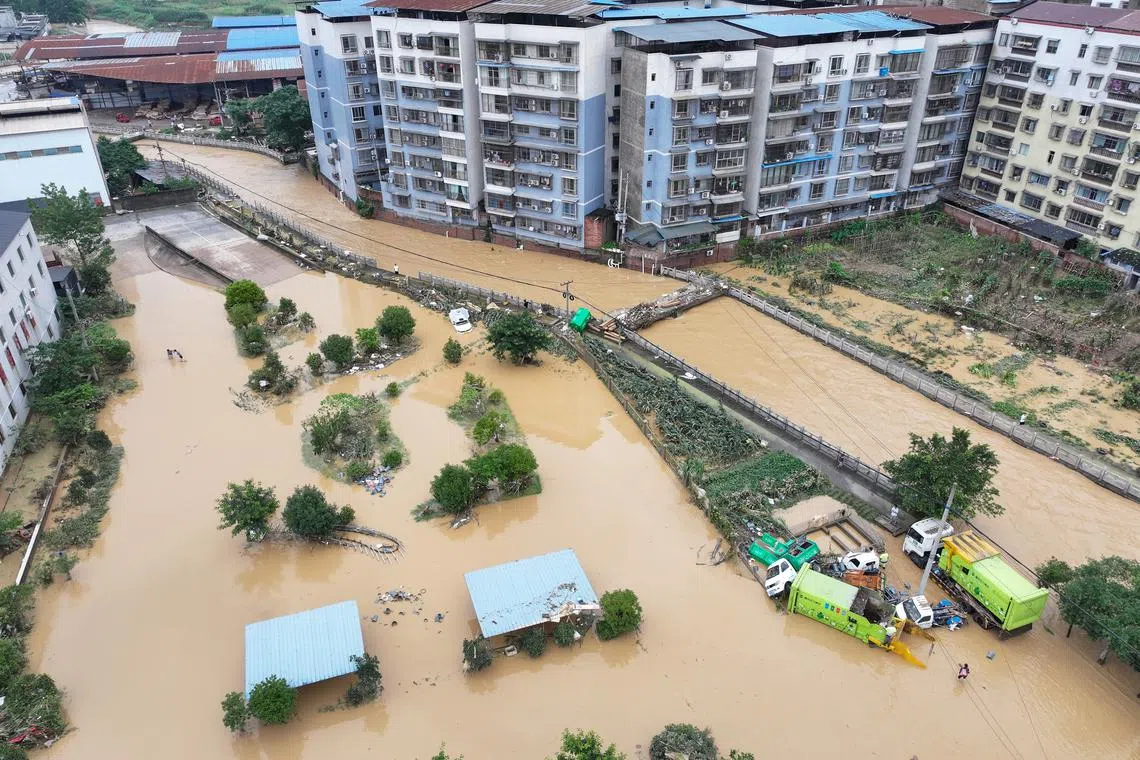China’s deadly downpours to intensify as tropical storms arrive
Sign up now: Get ST's newsletters delivered to your inbox

A river after heavy rain in Chengxi Town, Dianjiang County, China, on July 11.
PHOTO: EPA-EFE
Follow topic:
BEIJING – Heavy rain lashing China has left at least 26 people dead in the past week, flooding city streets and threatening farming and industrial activity, as two more tropical storms barrel towards the country.
Tropical storm Prapiroon was expected to make landfall near the border of China and Vietnam on July 23. Another storm, Gaemi, has already caused heavy rainfall and flight cancellations in northern Philippines, while the authorities in Taiwan issued a warning that it could affect people on the island in the coming days, before moving towards China.
The northern metropolis of Zhengzhou was forced to close schools and tourist spots last week, while cars were inundated on roads and in carparks.
At least 14 people in Sichuan and a dozen in Shaanxi died over the weekend due to flooding and a bridge collapse.
In addition to the human toll, the extreme weather raises risks of damage to everything from croplands and coal mines to fishing boats and offshore oil platforms, according to China’s National Mine Safety Administration.
The heavy precipitation could impact coal mining in the country’s third-largest production hub, Shaanxi, and hydropower generation, which has already seen a 21 per cent surge in the first half of 2024. Gaemi’s projected path across the Taiwan Strait is set to cross an area with dozens of offshore wind turbines.
Rainfall could also affect corn and soya bean growth in the north and rice in the south, right on the heels of heatwaves and drought that have already withered some crops in the country’s major agricultural areas.
China has already seen bouts of extreme weather in 2024 that have left a trail of damaged farms and infrastructure in their wake.
The country’s battles with flooding span thousands of years, and meteorologists warn it will only get worse as climate change exacerbates extreme fluctuations in weather. BLOOMBERG

